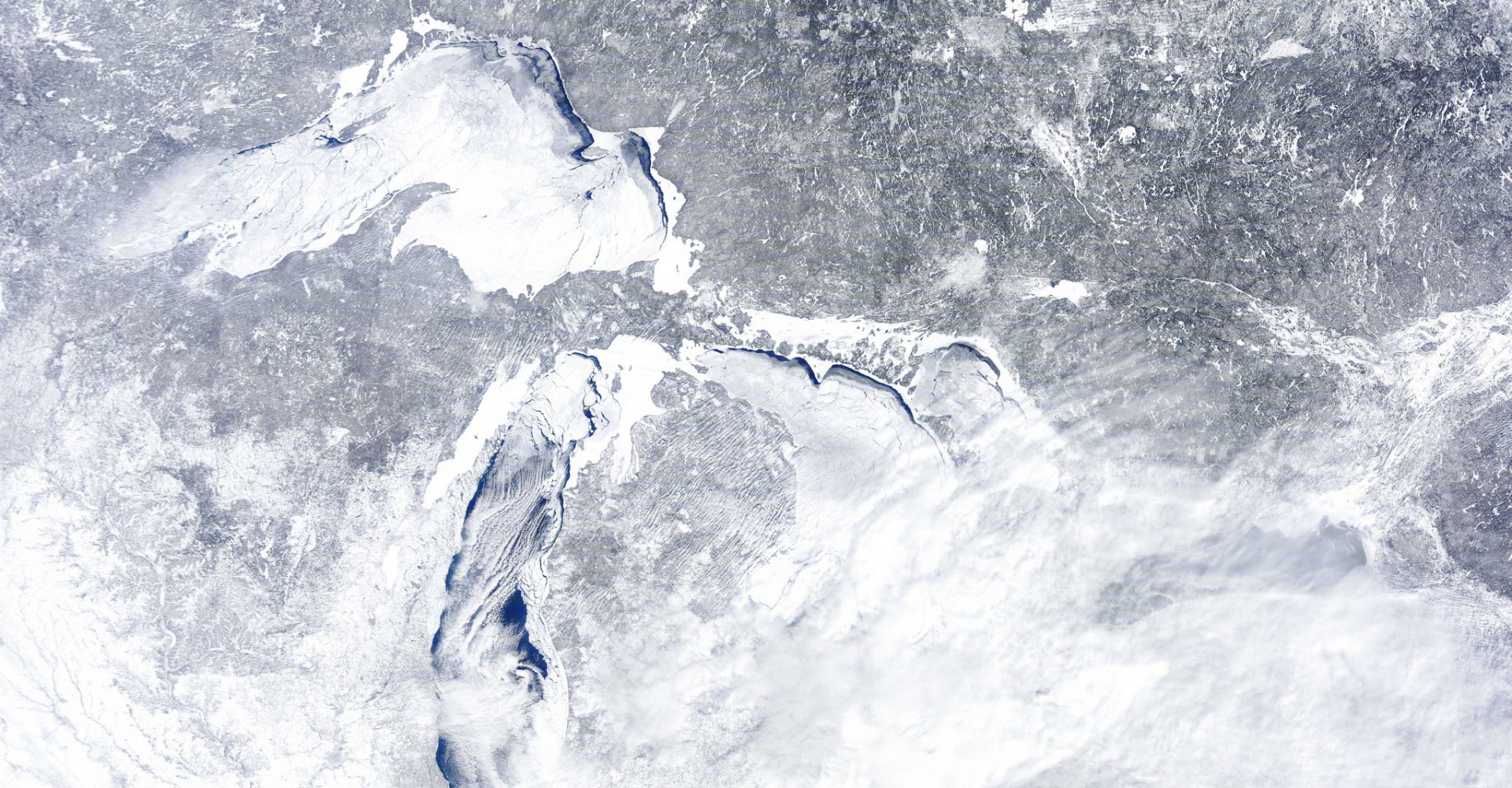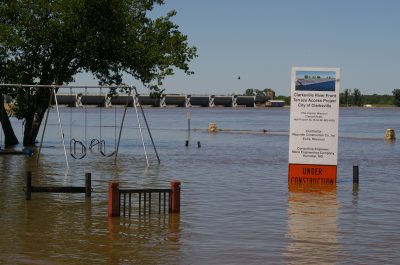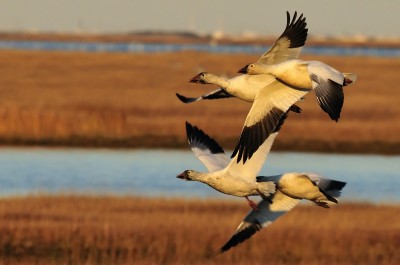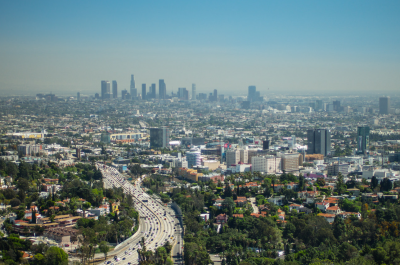Daytime high temperatures are in the single digits in Minnesota right now. It’s the kind of weather “the Land of a Thousand Lakes” is famous for, but a couple of weeks back they were in the balmy mid-thirties. Driving from Cloquet to Duluth, ISeeChange observer Hailey Raushel called that “relaxed.”
She lives along the western shore of Lake Superior, the largest freshwater lake in the country. And at the beginning of December, she noticed something curious. “There is no ice on Lake Superior, and I have still seen boats passing through the canal with ease. No ice has formed; therefore the ice breaking boats have not been out yet.”
She also noticed snow. “In Cloquet, snow was falling rapidly and driving was difficult. Then without warning as I drove along the lake the snow had stopped,” she wrote. “It is amazing to see the difference in weather a few miles apart.”
This week, Hailey Raushel’s probably less relaxed. Ice has started to form on the Great Lakes. Unseasonably cold temperatures have replaced unseasonably warm ones, and more snow is ahead, leaving a lot of people – including our observers – confused about what’s normal.
What’s going on to influence snow and ice around Lake Superior?
It’s early yet in winter for Lake Superior to be much frozen around Duluth. But ice cover has been noticeably changing on the Great Lakes for decades. What role global climate change has in that is a major question for researchers – one they’re starting to nail down.
Local, regional and global forces are brewed into the recipe for Lake Superior ice, and they’re changing. Ingredients include air and water temperatures, seasonal evaporation, and broader atmospheric trends. George Leshkevich, a physical scientist at the National Oceanic and Atmospheric Administration’s Great Lakes Environmental Research Laboratory, says they are noticeable – and noticeably changing.
“I remember back in the 70s and 80s, we had some real rough ice years, in the early 90s’ too,” he says . ”And you know, it seemed like there might have been a mild year in there, or maybe two in a row, but then it would revert back to normal or severe.”
But Leshkevich says since about 1998, the lake and its ice cycle have turned a corner.
Recipe for change
Air temperatures have something to do with it. These days, Minnesota is the fastest warming state in the lower 48. So those balmy temperatures Hailey noticed? The period between September and November was the warmest in Minnesota since records began in 1895.
And influenced by those air temperatures, the waters of Lake Superior are heating up even faster. A study from the University of Minnesota in Duluth concluded that summer surface water temperatures in the lake have risen 5 degrees in the last three decades.
In a sense, the water holds on to seasons past.
“We use the term facetiously of course, but the lake has a memory,” Jay Austin, a physicist with the Large Lakes Observatory at the University of Minnesota at Duluth, told MPR News, “in that, summer water temperatures reflect what happened the previous winter.”
Mild winters – including those brought by El Nino – mean more sun heating up the lake, which contributes to evaporation, not in the summer when it’s hottest, but in fall, when the water is warmest relative to the atmosphere. That evaporation has a cooling effect, and high evaporation rates in the fall often precede big ice years.
The size of the lake makes accounting for and documenting interactions among temperatures and water cycles across seasons complex enough. But they are also overlaid with climate patterns, including the Arctic and North Atlantic Oscillations, changes in the atmospheric pressure that control storm tracks as they move over the Great Lakes.
Less ice, more weird
Together, all of these factors are making lake ice less prevalent and more weird, especially to the casual observer in Minnesota.
It’s true that in some years, ice still covers more than 95% of Lake Superior; 2014 was particularly icy. But Leshkovich says Superior is also seeing record lows. “If you plot a trend line through [ice cover levels], since 1973, the trend line is downward,” Leshkevich says. And it’s not just Superior. “Overall, the trend is less ice cover downward over the last 40 years or so in the Great Lakes.”
Great places to observe
#ISeeChange welcomes your posts and observations documenting seasons and changes from beside lakes, large and small. Because lakes are warming faster than oceans or the atmosphere, University of Minnesota-Duluth’s Jay Austin has taken to calling them “climate antenna” – a way to look at warming trends. Lake Superior might be the largest antenna of that kind on the planet, but plenty of smaller ones are all around us – maybe right near you!
Credit: MODIS image of ice cover on Great Lakes. February 16, 2014. Courtesy NOAA Great Lakes CoastWatch.




